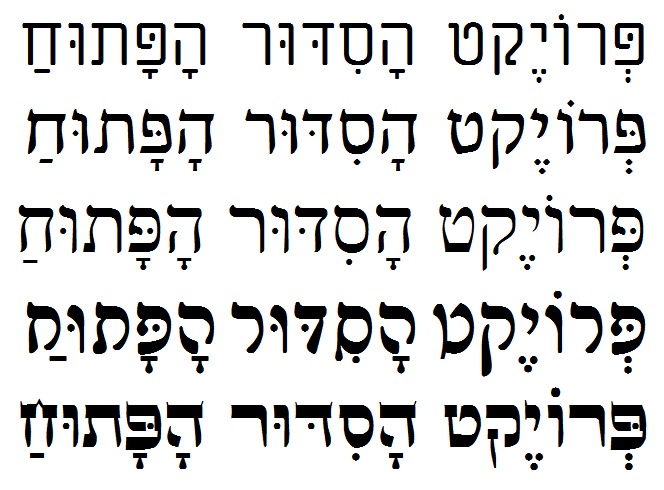
HEBREW ALPHABET FONTS FOR CHILDREN FULL
There is a trend in Modern Hebrew towards the use of matres lectionis to indicate vowels that have traditionally gone unwritten, a practice known as " full spelling". In both biblical and rabbinic Hebrew, the letters י ו ה א can also function as matres lectionis, which is when certain consonants are used to indicate vowels. As with other abjads, such as the Arabic alphabet, during its centuries-long use scribes devised means of indicating vowel sounds by separate vowel points, known in Hebrew as niqqud. Originally, the alphabet was an abjad consisting only of consonants, but is now considered an " impure abjad". Five letters have different forms when used at the end of a word. In the remainder of this article, the term "Hebrew alphabet" refers to the square script unless otherwise indicated. Various "styles" (in current terms, " fonts") of representation of the Jewish script letters described in this article also exist, including a variety of cursive Hebrew styles. "Assyrian script"), since its origins were alleged to be from Assyria. The present "Jewish script" or "square script", on the contrary, is a stylized form of the Aramaic alphabet and was technically known by Jewish sages as Ashurit (lit. The original, old Hebrew script, known as the paleo-Hebrew alphabet, has been largely preserved in a variant form as the Samaritan alphabet. Historically, two separate abjad scripts have been used to write Hebrew.


It is an offshoot of the Imperial Aramaic alphabet, which flourished during the Achaemenid Empire and which itself derives from the Phoenician alphabet. It is also used informally in Israel to write Levantine Arabic, especially among Druze. The Hebrew alphabet ( Hebrew: אָלֶף־בֵּית עִבְרִי, Alefbet ivri), known variously by scholars as the Ktav Ashuri, Jewish script, square script and block script, is an abjad script used in the writing of the Hebrew language and other Jewish languages, most notably Yiddish, Ladino, Judeo-Arabic, and Judeo-Persian. BCEĪdlam (slight influence from Arabic) 1989 CE

Caucasian Albanian (origin uncertain) c.Cherokee (syllabary letter forms only) c.


 0 kommentar(er)
0 kommentar(er)
